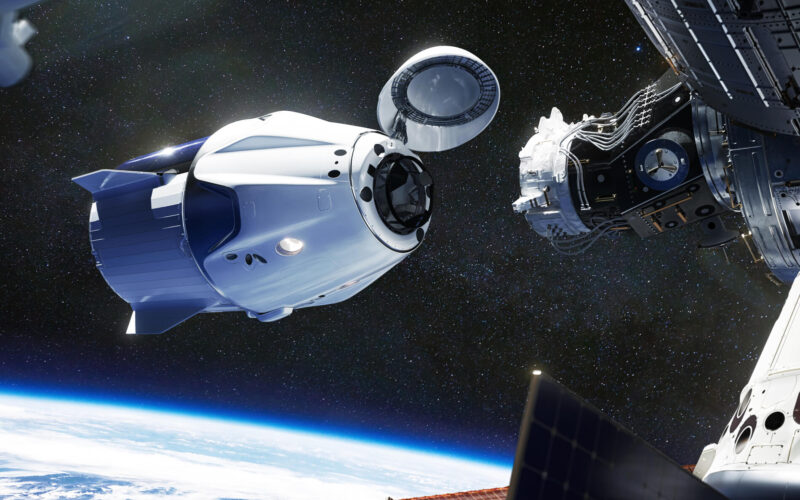Four astronauts on board of the SpaceX Dragon capsule safely docked with the International Space Station (ISS) around 11:00pm ET on November 16, 2020.
The Dragon capsule, named Resilience, was launched on a Falcon 9 rocket from NASA’s Kennedy Space Center in Florida. Four astronauts on a Crew-1 mission – Michael Hopkins, Victor Glover and Shannon Walker with NASA, and Soichi Noguchi, with Japan’s space agency – were on the capsule for more than 30 hours before docking with the station.
“SpaceX, this is Resilience. Excellent job, right down the center,” Hopkins, the commander of Resilience, told mission control after the docking. “SpaceX and NASA, congratulations. This is a new era of operational flight to the International Space Station from the Florida coast.”
Upon docking with the ISS, the astronauts were met by NASA astronaut Kate Rubins and Russia’s Sergey Ryzhikov and Sergey Kud-Sverchkov, who were already on board. They were launched to the space station on Russia’s Soyuz MS-17 spacecraft on October 14, 2020. It is the first time that the ISS will have seven crew members on board, instead of the usual six. The bigger team would allow more technological developments and scientific research to be done on board.
Hopkins, Walker and Noguchi have already flown on a space shuttle while Glover is making his first flight to the ISS. Glover’s inclusion in the mission has its own historical significance – he is the first Black American to become a full-time crew member on the ISS.
The team is expected to stay in the ISS for 6 months, handing off the station for the Crew-2 mission that is due to launch in the spring of 2021.
The Crew-1 mission is the first one to bring astronauts to the ISS for a long-duration on a commercial spacecraft. In 2011, NASA retired its space shuttle fleet and since then the US relied entirely on Russian Soyuz rockets and spacecraft for astronaut transportation to and from the ISS. Since 2006, NASA has purchased 71 Soyuz seats for roughly $4 billion including $90.3 million for Kate Rubins’ ticket.
In 2014, NASA started the Commercial Crew Program and contracted SpaceX and Boeing to build commercial aircraft. This means NASA will no longer have to rely only on Russia to take American astronauts to the space station. However, it still plans to use Russian Soyuz spacecraft in case of emergencies, which could result in early departures from the ISS.
In May 2020, SpaceX launched its first crewed mission for NASA – Demo-2 – following a successful test flight to the station in March 2019. By mid-2020, Boeing planned to launch its first crewed mission, Crewed Flight Test 1, but it was delayed as its first Starliner mission, Orbital Test Flight 1, failed to reach its intended orbit in 2019. The next attempt is planned for early 2021. Boeing holds a contract with NASA worth $4.2 billion while SpaceX’s contract is for $2.6 billion.
SpaceX also has a contract with NASA to operate robotic resupply missions to the ISS with the cargo version of its Dragon aircraft.
“For the next 15 months we will fly seven crew and cargo Dragon missions for NASA. That means that, starting with Crew-1, there will be a continuous presence of SpaceX Dragons on orbit,” Benji Reed, SpaceX’s senior director for human spaceflight, said in a news conference.

